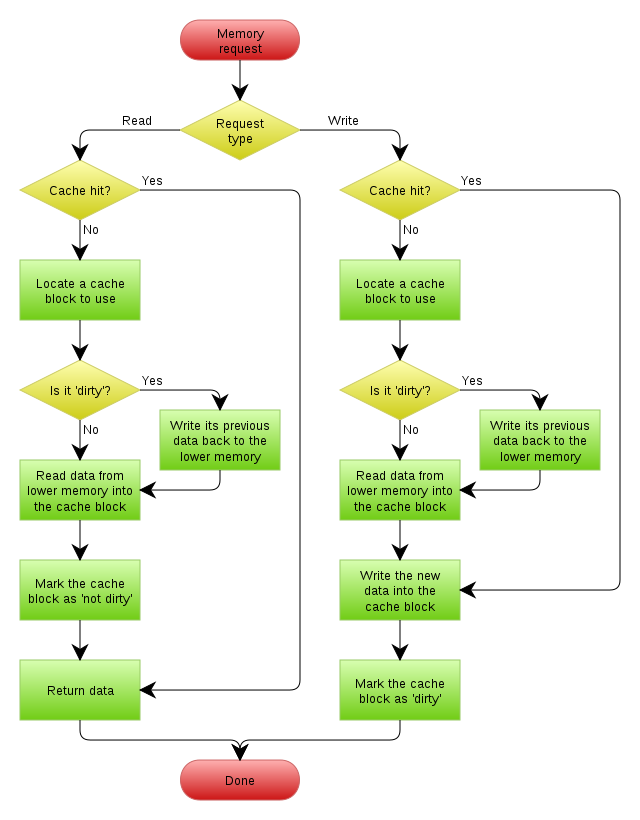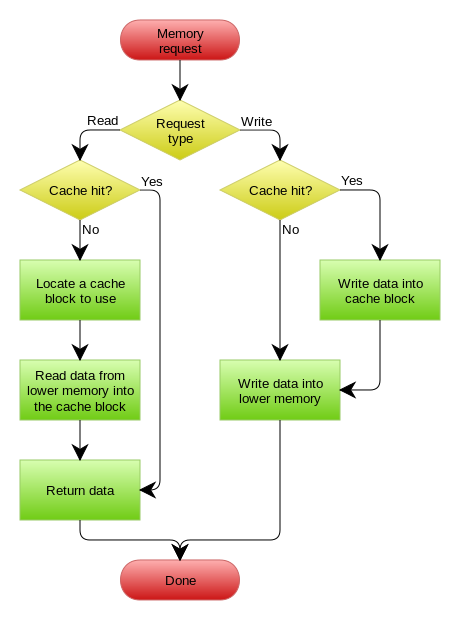计算机的存储系统采用Register,Cache,Memory和I/O的方式来构成存储系统,无疑是一个性能和经济性的妥协的产物。Cache和Memory机制是计算机硬件的基础内容,这里就不再啰嗦。下面重点说明Write-back,Write-through及write allocate这三种操作的区别。
一、CPU读Cache
1. Read through,即直接从内存中读取数据;
2. Read allocate,先把数据读取到Cache中,再从Cache中读数据。
二、CPU写Cache
1. 若hit命中,有两种处理方式:
Write-through: write is done synchronously both to the cache and to the backing store。Write-through(直写模式)在数据更新时,把数据同时写入Cache和后端存储。此模式的优点是操作简单;缺点是因为数据修改需要同时写入存储,数据写入速度较慢。
Write-back (also called write-behind): initially, writing is done only to the cache. The write to the backing store is postponed until the cache blocks containing the data are about to be modified/replaced by new content。Write-back(回写模式)在数据更新时只写入缓存Cache。只在数据被替换出缓存时,被修改的缓存数据才会被写到后端存储(即先把数据写到Cache中,再通过flush方式写入到内存中)。此模式的优点是数据写入速度快,因为不需要写存储;缺点是一旦更新后的数据未被写入存储时出现系统掉电的情况,数据将无法找回。
2. 若miss,有两种处理方式:
Write allocate (also called fetch on write): data at the missed-write location is loaded to cache, followed by a write-hit operation. In this approach, write misses are similar to read misses.。Write allocate:先把要写的数据载入到Cache中,写Cache,然后再通过flush方式写入到内存中; 写缺失操作与读缺失操作类似。
No-write allocate (also called write-no-allocate or write around): data at the missed-write location is not loaded to cache, and is written directly to the backing store. In this approach, only the reads are being cached。No write allocate:并不将写入位置读入缓存,直接把要写的数据写入到内存中。这种方式下,只有读操作会被缓存。


注、本文两幅图来自wiki。